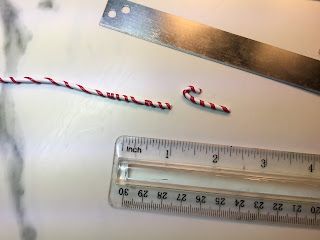These vases were inspired by Tiffany Cypriote Lava vases.
This is a true Cypriote Lava Vase
This vase sold at auction for $50,000.
I can't afford to buy one so I made one with Polymer clay.
This vase sold at auction for $50,000.
I can't afford to buy one so I made one with Polymer clay.
Items you will need to complete this project
Black, Blue & Gold clay (or other dark clay)
(it really dosen't matter what colors you use, these were just my choices.)
Pasta machine or roller
tissue blade
craft knife
sculpting tools
pearlx powder
soft pastels
Gold mica powder or Gold eye shadow
~~~~~~~~~~~~~~~~~~~~~~~~~~~~~~~~~~~~~~~~~~~~~~~~~~~~
Let's get started.
To begin, make a form with thin aluminum foil, the heavy duty foil doesn't work as well for this purpose. You can make it any shape you choose.
To begin, make a form with thin aluminum foil, the heavy duty foil doesn't work as well for this purpose. You can make it any shape you choose.
but the process is the same as the smaller piece.)
You could also work the clay over an existing vase, but I choose the foil for my first attempt.
Roll layers of the clay out on the thinnest setting of your pasta machine.
Cover the foil shape with the clay then work it
together to smooth it out. Next, form a rim.
My vase looks a bit "wonky", wonky is what I do best. :)
Add surface detail with your ball tools.
Now it's time to add the colors and pearl powder. Keep in mind, the first layer you add is the only one that will "stick" to the clay, so try to get everything you want on the first application.
Once you have it the way you want, time to cure the clay. I put this vase in a cold oven and set for 275 degrees, baking it for 1 hours and 20 minutes.
I have heard it said that ovens spike when they first begin to heat up, that's why it is suggested that you preheat your oven before you add your clay. My oven works well on the heat up, never had a problem so I start cold.
When your piece if baked and cooled, it's time to add the "lava".
Roll your gold clay out on the thinnest setting on your pasta machine.
Drape the clay over your vase and cut away the extra
to form the lava flow points.
to form the lava flow points.
This is the trickiest part of this project.
I tried to sculpt the lava to look natural.
I tried to sculpt the lava to look natural.
Once you get the lava the way you want it, it's time to add the Gold Mica to the gold clay.
Ready to go back in the oven for a second bake. Same as above.
(I cure all my clay at the same temp and time, even tiny thin items.) Easier that way.
It is all done, enjoy your Art Glass Vase!
It is all done, enjoy your Art Glass Vase!













































